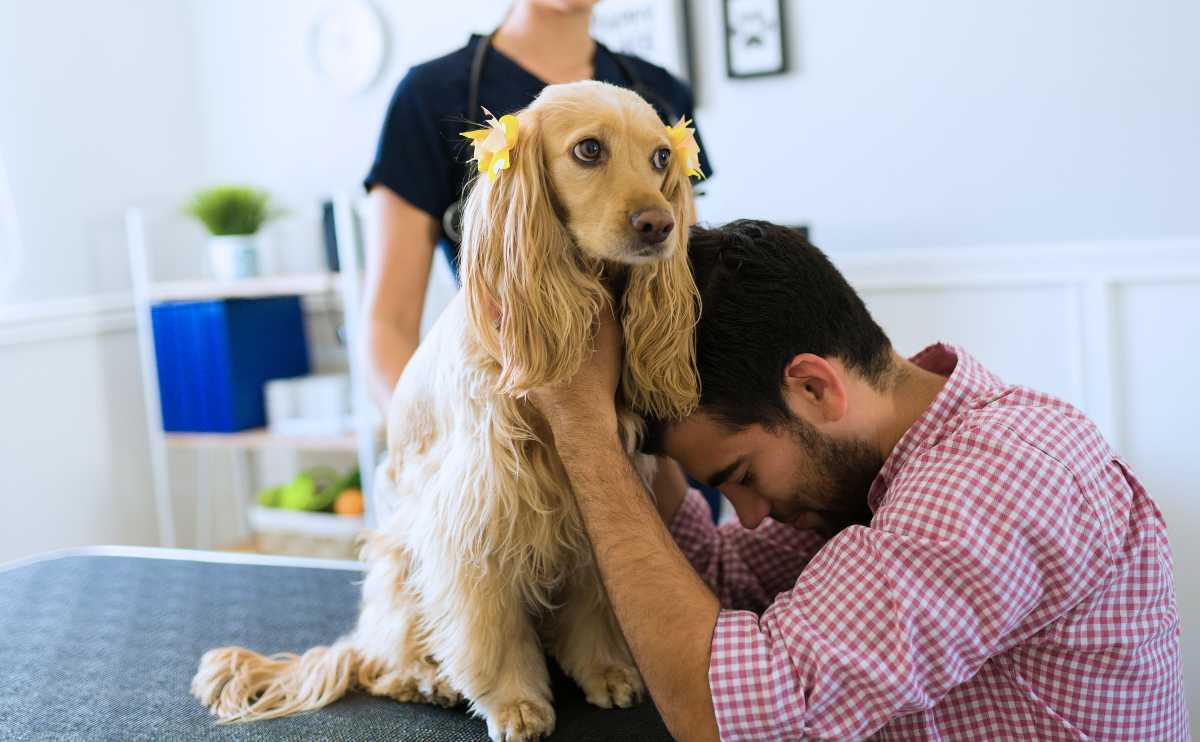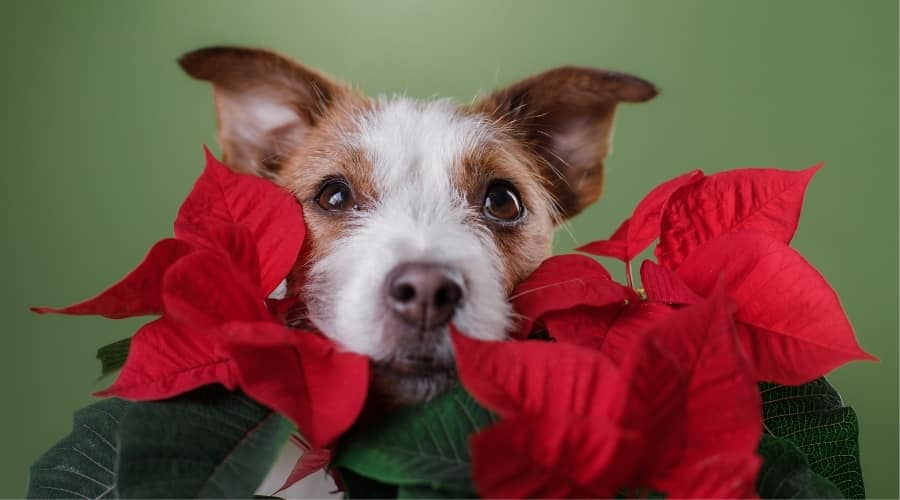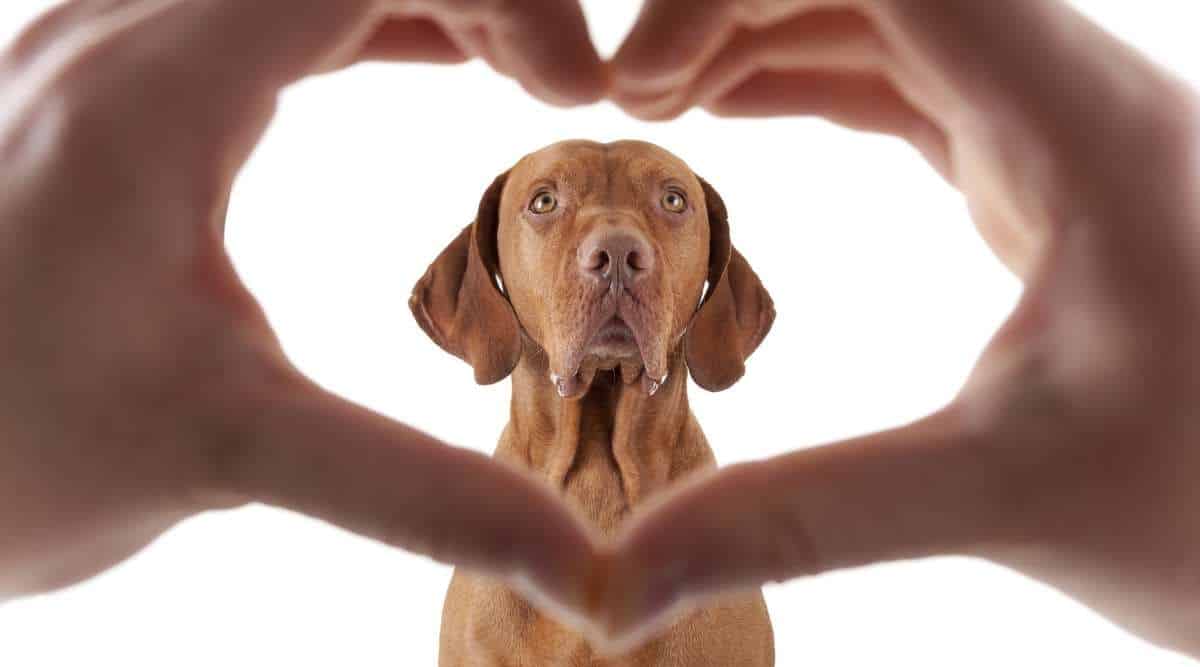Does My Dog Actually Love Me… Or Just My Snacks?
When you purchase through links on our site, we may earn a commission. Here’s how it works.
Are you the love of your dog’s life or just the keeper of the kibble? Wondering, “How to tell if your dog loves you?” It’s a legit question. Your pup may not say “I love you” out loud, but their weird, wiggly behaviors are packed with clues.
Table of Contents
From obsessive staring to presenting you with their soggy tennis ball like it’s a family heirloom, dogs have a hilarious (and surprisingly science-backed) way of showing love. Here’s how to spot them and what they really mean.
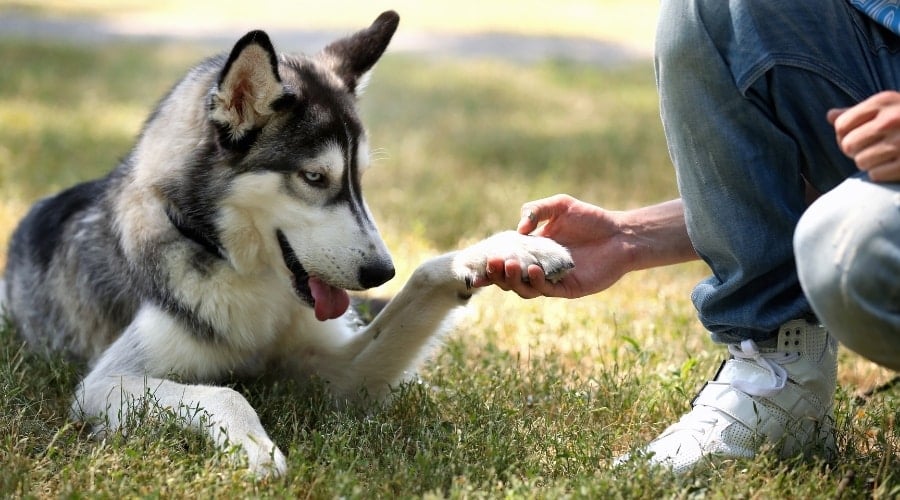
Show Your Dog You Love Them With Pet Insurance
Your dog’s love is priceless, but vet care isn’t.
Pet insurance can help cover unexpected costs like illnesses, injuries, and emergencies.
Learn more about the best pet insurance for dogs and get a free quote using the form below.
How To Tell If Your Dog Loves You
You fill their bowl, throw their slobbery toys, and let them hog your pillow. But be honest: Is it love… or are you just their walking vending machine?
Science says it might actually be love. A study out of Emory University showed that a dog’s brain lights up when they smell their owner, even more than when they smell food. So yeah, your dog might be into you for real.
But dog love isn’t like it is in the romcoms, it doesn’t come with roses and long walks on the beach. It comes with zoomies, awkward staring, and following you into the bathroom.
So… are you their soulmate or just their snack plug? Let’s decode the signs of how to tell if your dog loves you, starting with how your dog might be whispering “I love you” with their eyeballs.
How Dogs Show Love With Their Eyes
Ever catch your dog staring at you like they’re trying to memorize your soul? It’s not just because you’re holding a slice of pizza.
That intense eye contact? It’s one of the clearest signs your dog actually loves you. According to researchers, when dogs gaze into their human’s eyes, both brains release the “love hormone” oxytocin. This is the same hormone that bonds babies with parents.
Basically, your dog is giving you the same look newborns give their moms. No pressure.
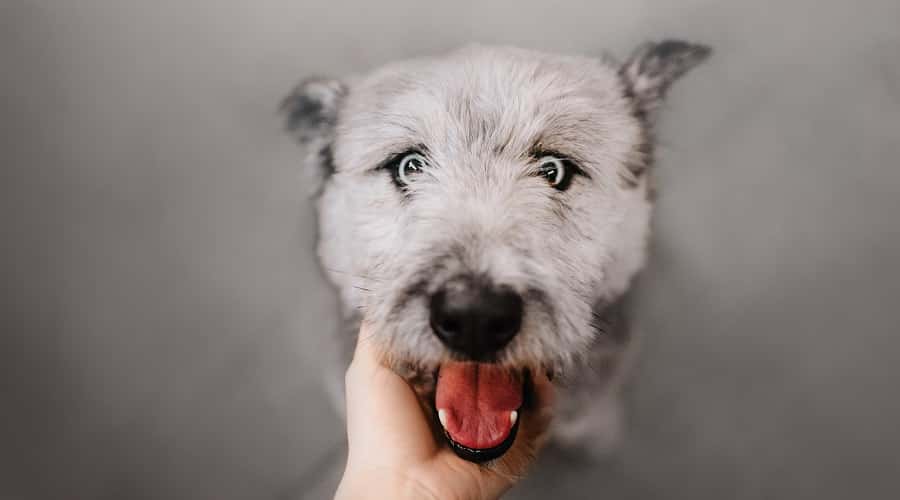
But not all stares are created equal. Creepy, unblinking glares while you’re eating? Food motivation. Soft, slow blinks while you’re just chilling? That’s puppy love in its purest form.
The bottom line? If your dog locks eyes with you for no apparent reason and doesn’t immediately demand a treat, they’re basically whispering “I love you” with their eyeballs.
What The Science Says About Dog Love
Okay, let’s get nerdy for a second because it turns out your dog isn’t just being cute. They’re literally wired to love you.
Studies using brain scans (fMRI, if you want to impress someone at brunch) show that when dogs see or smell their humans, the emotional part of their brain lights up. Just like ours does when we spot someone we actually like at a family reunion.
They get the same rush of feel-good chemicals we do in close relationships: oxytocin, dopamine, the whole emotional smoothie. That’s not just tail-wagging. It’s a full-on neurochemical hug.
And when they’re around strangers? Dogs often turn into toddlers at a chaotic birthday party – nervous, clingy, and stuck to their favorite person like a Velcro emotional support system.

In other words, yes, your dog might follow you into the bathroom, but it’s not just to watch you suffer in peace. Still wondering, “How to tell if your dog loves you?” It’s science.
3 Signs Your Dog Loves You
If dogs could write love poems, they’d probably involve socks, squeaky toys, and following you into the bathroom. But instead of roses and romantic gestures, dogs show love in hilariously weird and surprisingly consistent ways.
These aren’t just random quirks. They’re how your dog says, “You’re my person.” Let’s discover some of the ways how to tell if your dog loves you.
1. They Bring You Toys
That soggy tennis ball they’ve lovingly gnawed for three months? That’s their version of a diamond ring. Dogs share their favorite things with those they trust most.
If they drop a toy in your lap, or even better, shove it into your face mid-Zoom call, they’re not just being annoying. They’re giving you the best they’ve got.
Think I’m kidding about toy gifting being a love language? Watch Dash the Corgi launching his toys at his humans who work from home like he’s saying, “I love you… now take this smelly toy and play with me.”
2. They Lean On You
You’re standing in the kitchen, and suddenly, thud. Dog pressed against your leg like you’re a wall. That lean isn’t laziness; it’s love.
Dogs lean into their favorite people for comfort, security, and a side of affection. It’s their way of saying, “You’re my safe space.”
3. They Initiate Play
The classic “play bow,” front legs down, tail in the air, is a universal dog invite. But it’s not just about fetching sticks. It’s a social signal: I like you. I trust you. Let’s do something fun together.
Also, zoomies, those frantic bursts of chaotic joy, often follow moments of excitement or affection. In other words: You make them lose their damn minds, in a good way.
3 Dog Body Languages That Scream “I Love You”
Dogs are subtle in some ways, but when it comes to love? Their bodies do all the shouting. If you know what to look for, your dog’s posture, tail, and even ears are giving away their true feelings on the daily. Here are some of the ways how to tell if your dog loves you.
1. Tail Wag Direction
Yes, the direction matters. The tail-wag itself isn’t always the full story. It’s the body language behind it that counts. According to VCA Animal Hospitals, research shows there’s actually meaning in the direction of the wag.
A tail wagging more to the right? That’s a positive, relaxed emotion, and your dog is genuinely happy to see you.
More to the left? That can signal caution or uncertainty.
2. Full-Body Wiggle
If your dog’s tail wags so hard that their butt joins in? That’s the gold standard. The full-body wiggle is the ultimate canine expression of “I’m thrilled you exist.”
This is usually reserved for their favorite people and maybe the UPS delivery person, depending on the dog.
3. Nose Nudges & Head Tilts
A gentle nose nudge can mean “pet me,” “notice me,” or “I’m checking on you.”
Combine it with a curious head tilt, and you’re deep in dog affection territory. That tilt isn’t just for Instagram. Your dog’s trying to understand you and stay connected.

They Follow You Everywhere
It’s cute. It’s clingy. It’s also mildly invasive. But when your dog insists on accompanying you into the laundry room or bathroom, it’s not just because they lack boundaries. It’s because they really love you.
Dogs are pack animals, and your presence means safety, comfort, and belonging. In their world, if you walk into another room, especially behind a door, they assume the pack is splitting up. And that’s simply unacceptable. You are their pack.
This behavior also mirrors what young children do with parents: they seek proximity, especially during moments of separation. You going into the bathroom? In your dog’s eyes, that’s a dramatic exit. They just want to be close, even during your least glamorous moments.
And when you come home, there’s no doubt our pups are celebrating the reunion – to the point it seems they sense we’re on the way before we arrive.
Where They Sleep Says Everything About Your Bond: 3 Ways
Your dog’s sleeping spot isn’t just about finding the warmest place in the house. It’s a window into how close they feel to you. Where they choose to snooze says a lot about the level of trust, affection, and emotional glue in your relationship.
1. At Your Feet
This is classic “protector mode.” Sleeping near your feet signals loyalty and a desire to keep watch. You’re their home base, and they want to be near, even if it means awkwardly curling up by your ankles.
2. On Your Chest Or Lap
This is a full-on vulnerability move. When a dog lays directly on top of you, they’re combining affection with physical comfort. Your heartbeat, scent, and body warmth all reinforce their sense of safety. It’s basically dog therapy.
3. Under The Covers Or Tucked Behind Your Knees
Dogs who burrow or wedge themselves against you are showing deep trust. They’re seeking closeness and comfort the way they would in a den. If they snuggle into the crook of your knees or under a blanket with you? That’s elite-level bonding.
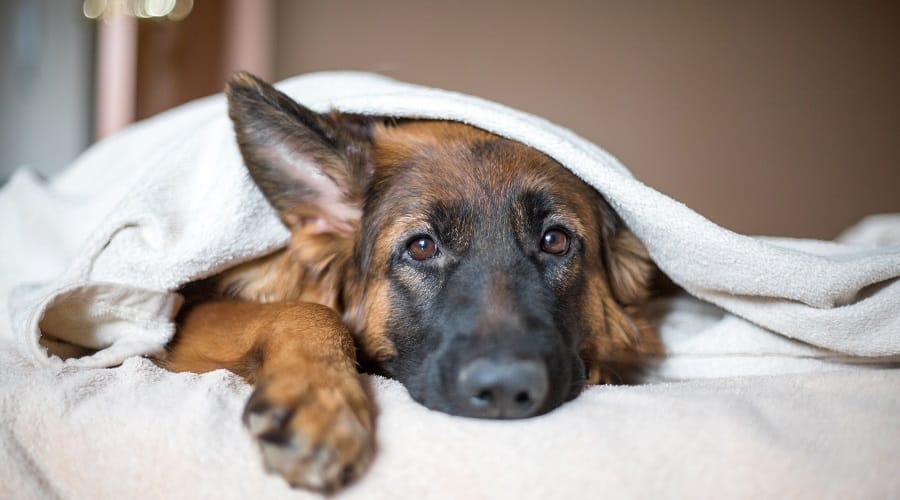
The instinct to sleep with the pack is deeply ingrained in canine DNA. Canines are pack animals in general, and there is safety in numbers.
4 Dog Sounds That Secretly Say “I Love You”
Your dog may not speak your language, but that doesn’t mean they’re quiet about their feelings. From low grumbles to high-pitched whines, their sounds are basically a canine love dialect. And it’s way more emotional than it seems.
1. The Sigh
That dramatic exhale when they plop down next to you? Pure contentment. It’s their version of “ahhh, home.” Dogs sigh when they feel safe, relaxed, and totally at ease, especially when they’re near you.
2. The Whine
Annoying? Sometimes. But often, whining is your dog’s way of seeking connection.
It’s an emotional request for attention, reassurance, or snuggles. If they whine softly while looking at you, they’re not complaining, they’re asking for a little love.

Chips, my little Dachshund, has a signature move when we’ve been apart for a while. She whines like a squeaky mouse. It’s not loud or dramatic, just this soft, high-pitched sound that starts the moment she sees me.
Her tail wags, her ears perk up, and that squeaky little voice kicks in like she’s trying to say, “Where have you been? I missed you!” It’s her own quiet, adorable way of saying I love you, and honestly, it melts me every time.
3. The Groan
This one’s underrated. Dogs will let out a groan when they’re cozy and comfortable, like when they stretch out in your lap or settle into their bed. It’s kind of like their version of, “Don’t move, I’m finally comfy.”
4. The “Talk-Back” Growl Or Howl
Some dogs are chatty. If yours howls or grumbles back at you during play or petting, they’re not being aggressive. They’re engaging. It’s social talk, and if it comes with a wagging tail or floppy ears, it’s full of affection.
Can Dogs Smell Love? The Surprising Science Of Scent
Your dog’s nose is a superpowered emotional radar, and it turns out it’s sniffing out your feelings more than you think.
Researchers have found that dogs can actually detect human emotions through scent. Sweat samples from happy and fearful people triggered different responses in dogs.
Relaxed body language for happiness, stress signals for fear. Translation? Your dog doesn’t just know when you’re upset, they feel it with you.
And when it comes to you personally? They don’t just recognize your scent – they adore it. In scent-based fMRI studies, dogs’ brains lit up most when exposed to the smell of their owner versus strangers or even food. Yes, you smell better to your dog than bacon. Let that sink in.
Different Breeds, Different Love Languages
Not all dogs show affection the same way. Some want to sit on your face; others express their love by standing guard three feet away like a furry bodyguard. Breed matters a lot when it comes to how to tell if your dog loves you and how they show they care.
Here’s a quick look at how different types of dogs tend to express their affection:
1. The Velcro Dogs
e.g., Labrador Retrievers, Vizslas, Cavalier King Charles Spaniels
Velcro dog breeds want to be attached to your hip (yes, probably, your actual hip). If you’re in the house, they must be next to you, preferably touching you at all times. Expect cuddles, leaning, and intense eye contact from across the room.
2. The Watchdogs
e.g., German Shepherds, Rottweilers, Dobermans
These breeds love through loyalty. They’ll patrol your hallway like it’s a security detail but melt the second you reach for a belly rub. Their affection often comes in the form of quiet closeness and fierce protectiveness.
3. The Play-First Lovers
e.g., Border Collies, Australian Shepherds, Jack Russells
These energetic brains-on-paws show love by wanting to engage. Fetch? Yes. Tug-of-war? Yes. Herding your kids into the kitchen? Definitely yes. If they’re trying to include you in the action, that is their affection.
4. The Reserved Romantics
e.g., Shiba Inus, Basenjis, Chow Chows
They love you, but they’re not writing you a sonnet anytime soon. These dogs show affection more subtly, by hanging out near you, making brief eye contact, or quietly following you from room to room. Love, with boundaries.
5. The Snuggle Champions
e.g., French Bulldogs, Pugs, Bichon Frises
These dogs are basically weighted blankets with legs. Physical affection is their top love language. If they’re not trying to merge with your body, something’s wrong. Be prepared for couch-hogging and snoring in your lap.
Quick Take: Your dog’s breed influences how they show love, not if they do. Whether it’s play, protection, or full-body snuggles, affection comes in many floppy, slobbery forms.
Dog Love By Age
The way your dog says “I love you” changes over time, and just like people, it’s all about the stage of life.
Puppies
- Wild zoomies when you walk in
- Chewing your stuff (yes, it’s a bonding attempt)
- Following you like a shadow
- Jumping up, pawing, licking – basically full physical enthusiasm
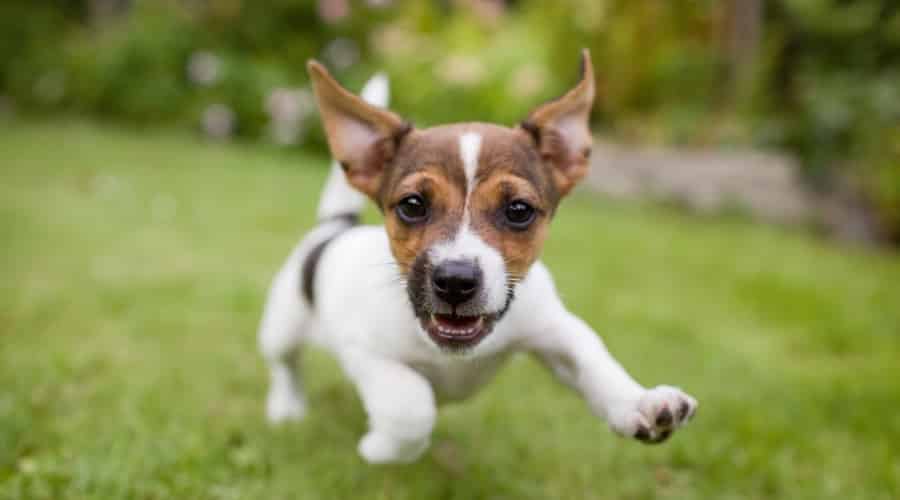
Adult Dogs
- Calmer affection, but still playful
- Loyalty through routine: sitting near you, checking in with eye contact
- Nuzzling or leaning instead of nonstop play
- “Guarding” behavior, such as resting near doors or watching your space
Senior Dogs
- Gentle companionship: being near you matters more than being on you
- More eye contact, soft tail wags, subtle nudges
- Slow follows from room to room, like a quiet little shadow
- Sleeping in your scent (pile of clothes, favorite chair = love nest)
No matter the age, dogs love hard. They just show it in ways that grow up with them.
6 Ways To Show Your Dog You Love Them Back
You know your dog loves you, so now it’s your turn. And no, you don’t need to make them a sweater or throw a bark-day party (unless you want to). What is the best way to love your dog? Speak their language.
Here are simple, science-backed ways to show your dog you love them.
1. Say Their Name With Affection
Dogs respond to tone. Saying their name in a calm, upbeat voice tells them, “You’re safe. You’re seen.” Bonus: it strengthens their trust in you over time.
2. Let Them Sniff On Walks
Sniffing is how dogs read the world. It’s not just “checking the pee-mail.” It’s mental stimulation and emotional satisfaction. Letting them explore with their nose is like giving them 10 pages of their favorite book.
3. Give Focused, Undistracted Attention
Put down the phone. Dogs know when you’re half-present. A few minutes of fully engaged petting, playing, or training time goes a long way in reinforcing your bond.
4. Use Eye Contact
Long stares can be threatening, but soft, relaxed eye contact while talking to your dog releases oxytocin for both of you. It’s literally a love drug. Gazing lovingly at your dog is scientifically approved.
5. Learn Their Preferences, Not Just Commands
Some dogs love cuddles. Others want space but love play. Paying attention to how your dog prefers to connect is a form of emotional respect, and it deepens the bond more than any trick ever could.
6. Give Positive Reinforcement & Praise
Your dog may not understand words like love or appreciation, but they absolutely understand what you reward. In dog language, positive reinforcement is one of the clearest ways to say, “You’re safe, you’re good, and you’re loved.”
That reinforcement doesn’t have to mean handing over a treat every time they sit. It can be simple, everyday actions that send the message loud and clear:
Ways To Use Positive Reinforcement To Show Love
- Touch – A gentle scratch behind the ears after they check in with you
- Talk – Praising them with a warm, happy tone when they come to you or follow a cue
- Treats – Rewarding calm behavior, eye contact, or those quiet moments when they choose to be near you

Over time, your dog learns that being close to you, connecting with you, and being themselves earns positive responses. That builds trust. And in a dog’s world, trust is love.
It also goes both ways: using positive reinforcement teaches you to notice the good stuff your dog does, the little choices that show their heart. It strengthens your bond, one tail wag at a time.
Bottom Line: Love isn’t one-size-fits-all, especially not in the dog world. Show affection in ways they understand, and your dog will feel it loud and clear.
A Love Story Thousands Of Years In The Making
Before cities. Before farms. Before humans even figured out how to live in groups… there were dogs.
Archaeologists believe that between 27,000 and 40,000 years ago, humans started domesticating wolves, the very creatures they once competed with for food.
Early humans likely shared lean scraps of food with the friendlier pups, especially during harsh winters when they couldn’t survive on protein alone. In return? Loyalty. Protection. Companionship. What started as survival became something more.
One ancient burial site in the Czech Republic, believed to be over 30,000 years old, features a dog laid to rest with a bone placed gently in its mouth. Another site in Germany shows a disabled dog buried beside two humans, dating to over 14,000 years ago. These weren’t just working animals – they were family.
Long before we had couches or kibble, we had dogs curled up by our fires. And it turns out, we’ve been loving them and being loved back for a very, very long time.
Signs Your Dog Is Too Attached
Love is beautiful. But when your dog starts acting like your furry little stalker with separation issues, it might be more than just affection, it could be anxiety.
Wondering how to tell if your dog loves you too much? Here’s the difference between healthy attachment and something more clingy than cute:
- Destructive behavior when you leave the house (chewing, digging, howling)
- Pacing or whining as soon as you’re out of sight
- Refusing to eat when you’re gone
- Attempting to escape from crates, rooms, or the house
- Potty accidents indoors, even if the dog is fully house-trained
- Hyper-attachment before you leave, such as shadowing, blocking the door, or panicking when you grab keys
Your dog loving you is wonderful, but helping them feel safe without you is part of loving them back.
For tips on easing your dog’s stress and building their confidence, head over to our complete separation anxiety guide. It’s packed with practical, vet-backed strategies that work.
FAQs About How To Tell If Your Dog Loves You
Still wondering what’s going on in that furry little head? You’re not alone. We get tons of questions from dog owners who want to decode the quirks, cuddles, and side-eyes their pups throw their way.
Here are some of the most common questions people ask about canine affection and what the science (and experience) says in return. Got a question I didn’t cover? Drop it in the comments, and we’ll find the answer for you.
How To Tell If Your Dog Loves You?
Look for the little things because they speak volumes. Dogs show love through eye contact, relaxed body language, following you from room to room, leaning on you, and bringing you toys (yes, even the gross ones).
If your dog seeks out your presence, responds positively to your voice, and seems happiest just being near you, that’s love; no heart-shaped collar tag required.
Can Dogs Really Feel Love?
Yes. Studies show dogs experience many of the same emotional chemicals humans do, like oxytocin and dopamine, especially when they’re with their favorite person. That zoomie explosion when you walk through the door? Pure, tail-wagging love.
How Do I Know It’s Not Just About Food?
If your dog seeks you out when there’s no food involved, like sitting near you, following you around, or resting their head in your lap, that’s affection, not appetite. A dog motivated only by food doesn’t choose to cuddle after dinner.
Why Does My Dog Stare At Me?
If it’s a soft, relaxed stare, not a “where’s my dinner?” death glare, it’s one of the most powerful signs of trust and love. Dogs release oxytocin (the bonding hormone) during gentle eye contact, just like humans do with babies.
Does Tail Wagging Always Mean They’re Happy?
Not always. A fast, loose wag (especially with a wiggly body) usually means excitement and affection. But a stiff, high tail or wagging more to the left can mean anxiety or caution. Context matters.
Do Dogs Pick A Favorite Person?
They often do, based on who feeds them, plays with them, and interacts most positively. If you’re consistently meeting their emotional needs (not just tossing snacks), there’s a good chance you are their chosen one.
How Can I Strengthen The Bond?
Be consistent. Reward them with attention, affection, and clear communication. Let them sniff, give them choices, and spend focused time together. Positive reinforcement, calm energy, and respect go a long way in building lifelong trust and love.
Keep The Tail Wags Coming
Want to show your pup even more love? Start with what goes in the bowl. Check out our top picks for the best dog food for every breed and budget.
Give them a good night’s sleep with one of the highest-rated dog beds that dogs actually choose over the couch. And keep playtime exciting with our roundup of dog toys that survive chewers, shredders, and squeakers-obsessed maniacs.
And don’t forget peace of mind. Our guide to pet insurance breaks down the best coverage for your best friend. Whether it’s unexpected vet visits or simply being ready for any mischief they might get into, remember that loving them means protecting them, too.
Do you feel the love with your pup? Tell us how you knew! Whether it was a clingy cuddle, a goofy zoomie, or a slobbery toy drop-off, we want to hear your moment of how to tell if your dog loves you. Share your story in the comments and help turn this into a full-on love fest for our four-legged soulmates.
